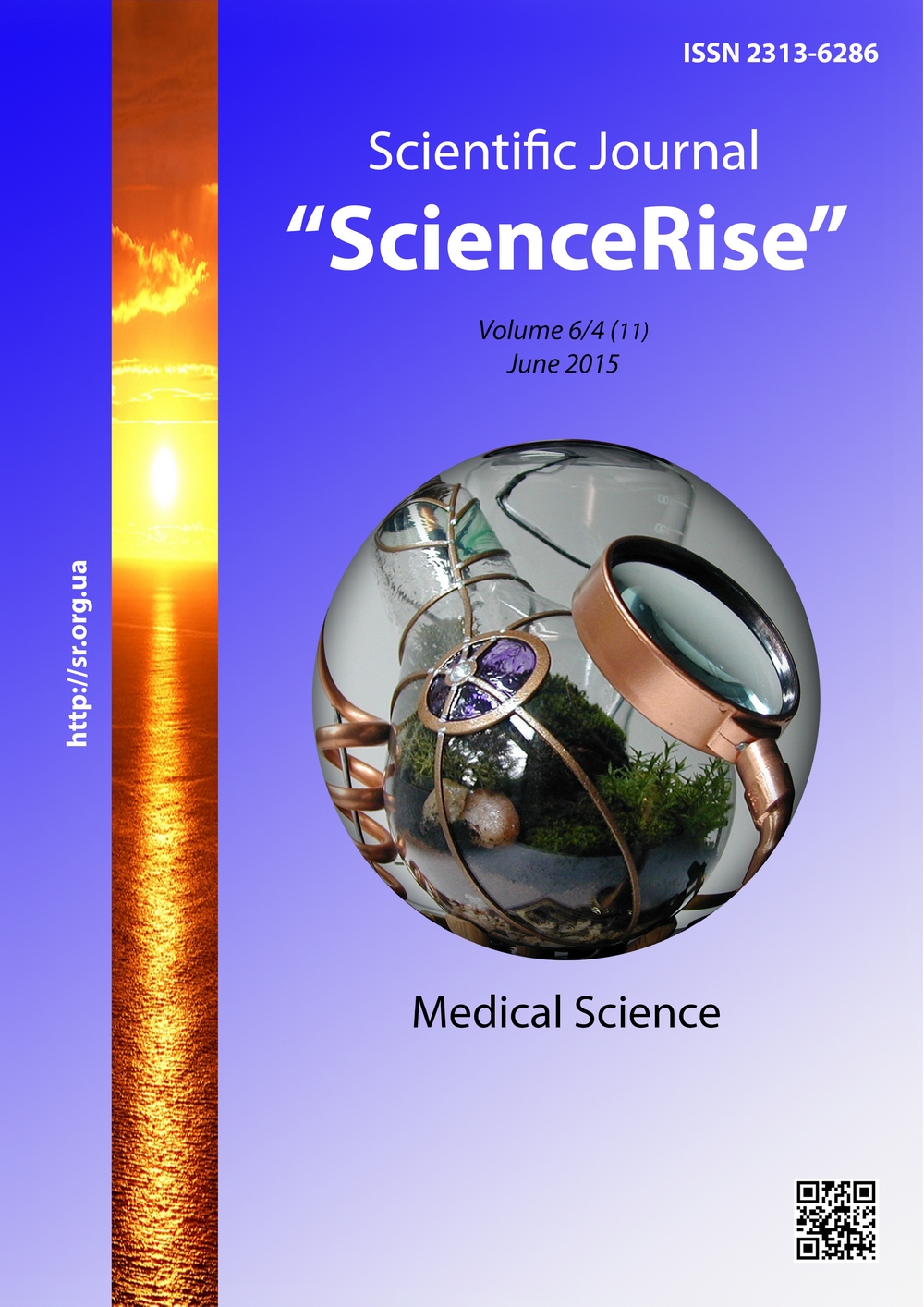Значение коморбидности для стратификации лечения острых миелоидных лейкозов у взрослых
DOI :
https://doi.org/10.15587/2313-8416.2015.45466Mots-clés :
острый миелоидный лейкоз, прогноз, стратификация лечения, коморбидность, индекс Чарлсон, выживаемостьRésumé
Смертность при лечении острого миелоидного лейкоза (ОМЛ) нередко обусловлена развитием тяжелых осложнений на фоне измененного соматического статуса при наличии коморбидности. Для определения влияния коморбидности на результативность лечения ОМЛ и выживаемость проанализированы истории 97 больных ОМЛ. Доказано, что высокий индекс коморбидности является значимым риском развития рецидива или прогрессирования ОМЛ, достоверно увеличивает риск смерти и ухудшает общую и безрецидивную выживаемость
Références
Grimwade, D., Hills, R. K. (2009). Independent prognostic factors for AML outcome. Hematology, 2009 (1), 385–395. doi: 10.1182/asheducation-2009.1.385
Etienne, A., Esterni, B., Charbonnier, A., Mozziconacci, M.-J., Arnoulet, C., Coso, D. et. al. (2007). Comorbidity is an independent predictor of complete remission in elderly patients receiving induction chemotherapy for acute myeloid leukemia. Cancer, 109 (7), 1376–1383. doi: 10.1002/cncr.22537
Sorror, M. L., Maris, M. B., Storb, R. et al. (2005). Hematopoietic cell transplantation (HCT)-specific comorbidity index: a new tool for risk assessment before allogeneic HCT. Blood, 106 (8), 2912–2919. doi: 10.1182/blood-2005-05-2004
Sorror, M. L., Sandmaier, B. M., Storer, B. E., Maris, M. B., Baron, F., Maloney, D. G. et. al. (2007). Comorbidity and Disease Status Based Risk Stratification of Outcomes Among Patients With Acute Myeloid Leukemia or Myelodysplasia Receiving Allogeneic Hematopoietic Cell Transplantation. Journal of Clinical Oncology, 25 (27), 4246–4254. doi: 10.1200/jco.2006.09.7865
Porta, M. G. D., Malcovati, L. (2009). Clinical relevance of extra-hematologic comorbidity in the management of patients with myelodysplastic syndrome. Haematologica, 94 (5), 602–606. doi: 10.3324/haematol.2009.005702
Zajrat'janc O. V., Kakturskij L. V. (2008). Formulirovka i sopostavlenie klinicheskogo i patologoanatomicheskogo diagnozov. Moscow.
Pal'cev M. A., Avtandilov G. G., Zajrat'janc O. V., Kakturskij L. V., Nikonov E. L. (2006). Oformlenie diagnoza. Moscow.
Vertkin, A. L., Rumjancev, M. A., Skotnikov, A. S. et. al. (2011). Komorbidnost'. Vestnik semejnoj medicin, 3, 40–47.
Charlson, M. E., Pompei, P., Ales, K. L., MacKenzie, C. R. (1987). A new method of classifying prognostic comorbidity in longitudinal studies: Development and validation. Journal of Chronic Diseases, 40 (5), 373–383. doi: 10.1016/0021-9681(87)90171-8
Campbell-Scherer, D. (2010). Multimorbidity: a challenge for evidence-based medicine. Evidence-Based Medicine, 15 (6), 165–166. doi: 10.1136/ebm1154
Leith, C. P., Kopecky, K. J., Chen, I. M. et al. (1999). Frequency and clinical significance of the expression of the multidrug resistence proteins MDR1/P-glicoprotein, MRP1, and LRP in acute myeloid leukemia: A Southwest Oncology Group Study. Blood, 94, 1086–1099.
Leith, C. P., Kopecky, K. J., Godwin, J. et al. (1997). Acute myeloid leukemia in the elderly: assessment of multidrug resistance (MDR1) and cytogenetics distinguishes biologic subgroups with remarkably distinct responses to standard chemotherapy: a Southwest Oncology Group study. Blood, 89, 3323–3329.
De Groot, V., Beckerman, H., Lankhorst, G., Bouter, L. (2004). How to measure comorbidity: a critical review of available methods. Journal of Clinical Epidemiology, 57 (3), 323. doi: 10.1016/j.jclinepi.2003.09.002
Rozzini, R., Frisoni, G. B., Ferrucci, L., Barbisoni, P., Sabatini, T., Ranieri, P., Guralnik, J. M., Trabucchi, M. (2002). Geriatric Index of Comorbidity: validation and comparison with other measures of comorbidity. Age and Ageing, 31 (4), 277–285. doi: 10.1093/ageing/31.4.277
Vardiman, J. W., Thiele, J., Arber, D. A., Brunning, R. D., Borowitz, M. J., Porwit, A. et. al. (2009). The 2008 revision of the World Health Organization (WHO) classification of myeloid neoplasms and acute leukemia: rationale and important changes. Blood, 114 (5), 937–951. doi: 10.1182/blood-2009-03-209262
Löwenberg, B., Ossenkoppele, G. J., van Putten, W., Schouten, H. C., Graux, C., Ferrant, A. et. al. (2009). High-Dose Daunorubicin in Older Patients with Acute Myeloid Leukemia. New England Journal of Medicine, 361 (13), 1235–1248. doi: 10.1056/nejmoa0901409
Gricaev, S. V., Martynkevich, I. S., Martynenko, L. S. et. al. (2010). Sravnitel'nyj analiz kariotipa pozhilyh bol'nyh mielodisplasticheskim sindromom i ostrym mieloidnym lejkozom. Klinicheskaja onkogematologija, 2, 114–118.
Téléchargements
Publié-e
Numéro
Rubrique
Licence
(c) Tous droits réservés Надежда Валерьевна Горяинова 2015

Cette œuvre est sous licence Creative Commons Attribution 4.0 International.
Our journal abides by the Creative Commons CC BY copyright rights and permissions for open access journals.
Authors, who are published in this journal, agree to the following conditions:
1. The authors reserve the right to authorship of the work and pass the first publication right of this work to the journal under the terms of a Creative Commons CC BY, which allows others to freely distribute the published research with the obligatory reference to the authors of the original work and the first publication of the work in this journal.
2. The authors have the right to conclude separate supplement agreements that relate to non-exclusive work distribution in the form in which it has been published by the journal (for example, to upload the work to the online storage of the journal or publish it as part of a monograph), provided that the reference to the first publication of the work in this journal is included.

